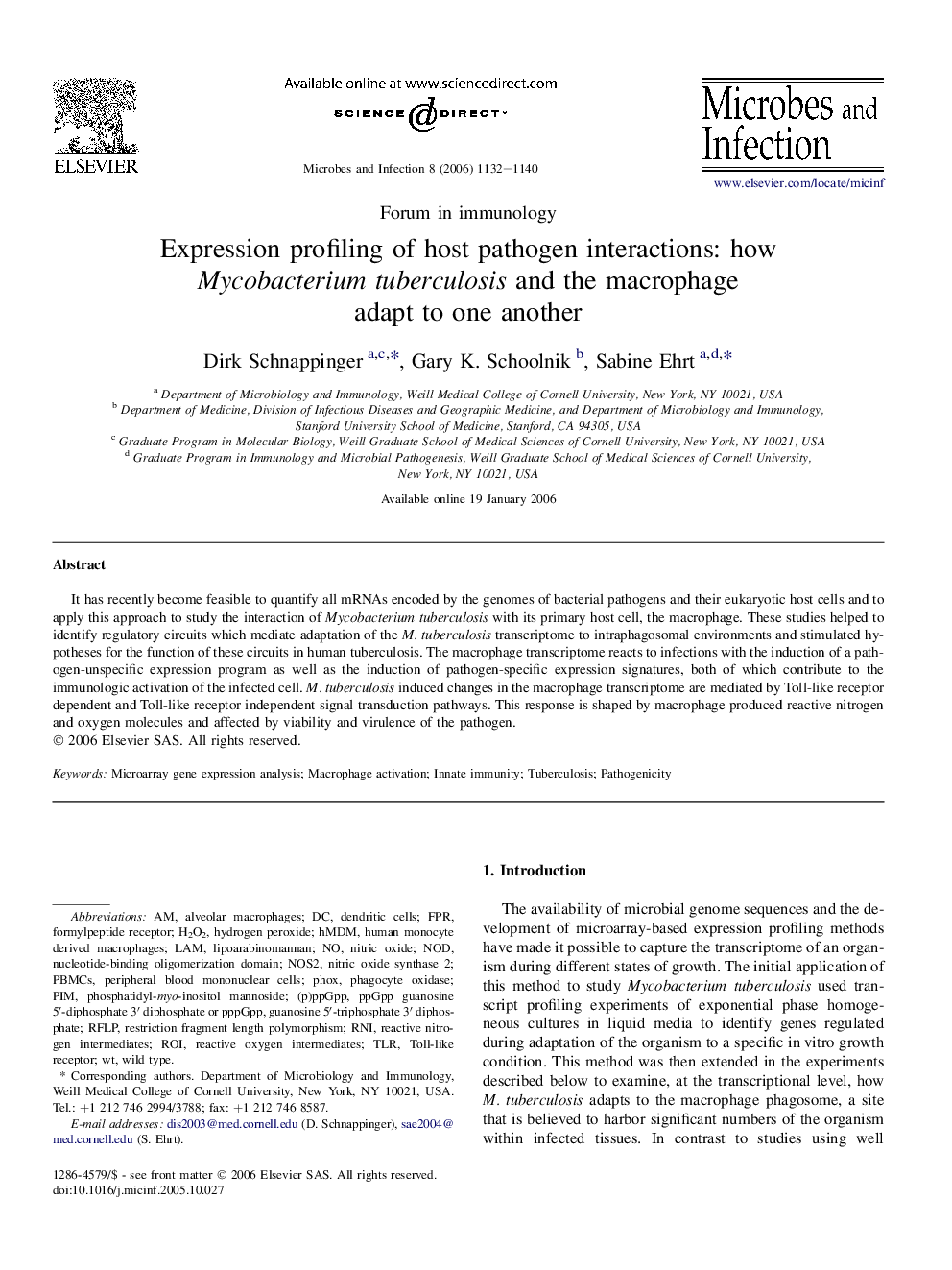| Article ID | Journal | Published Year | Pages | File Type |
|---|---|---|---|---|
| 3416082 | Microbes and Infection | 2006 | 9 Pages |
It has recently become feasible to quantify all mRNAs encoded by the genomes of bacterial pathogens and their eukaryotic host cells and to apply this approach to study the interaction of Mycobacterium tuberculosis with its primary host cell, the macrophage. These studies helped to identify regulatory circuits which mediate adaptation of the M. tuberculosis transcriptome to intraphagosomal environments and stimulated hypotheses for the function of these circuits in human tuberculosis. The macrophage transcriptome reacts to infections with the induction of a pathogen-unspecific expression program as well as the induction of pathogen-specific expression signatures, both of which contribute to the immunologic activation of the infected cell. M. tuberculosis induced changes in the macrophage transcriptome are mediated by Toll-like receptor dependent and Toll-like receptor independent signal transduction pathways. This response is shaped by macrophage produced reactive nitrogen and oxygen molecules and affected by viability and virulence of the pathogen.
